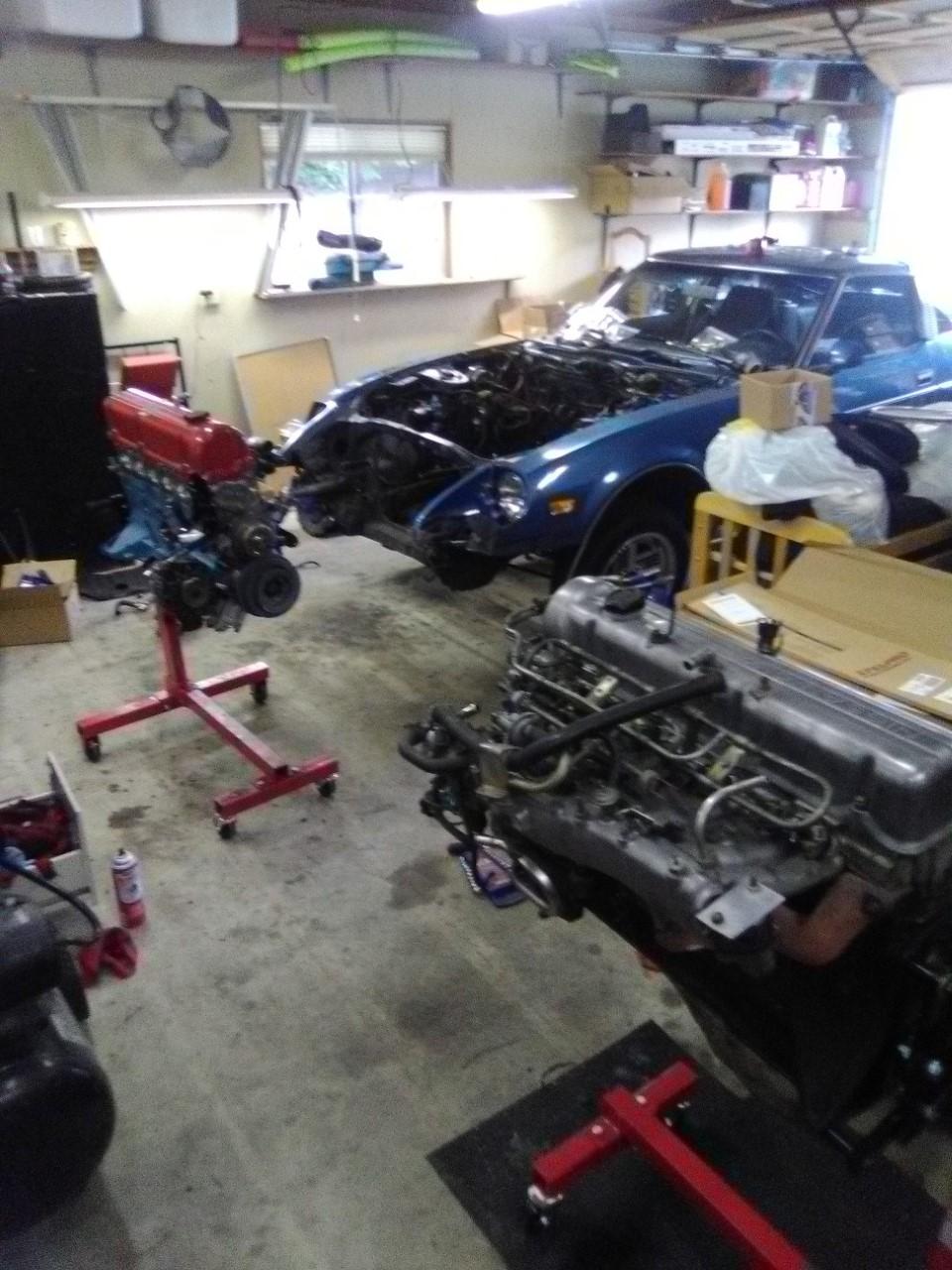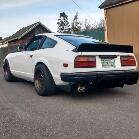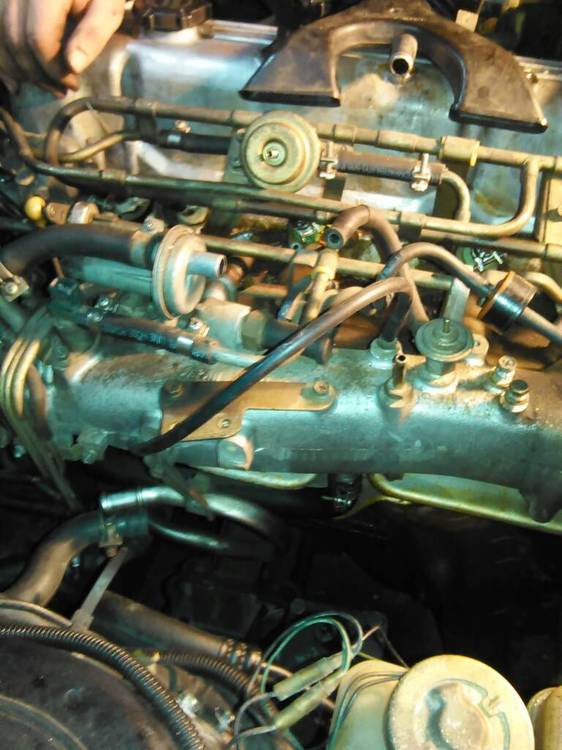
Everything posted by Reptoid Overlords
-
Not mine.
Yikes. I'll bet it ends up with a small block Chevy in it.
-
Not mine.
At past prices you could buy the car, have a stroker built for it and still not hit $11k.
-
5/70 part out in Seattle
Looks like its back. https://seattle.craigslist.org/see/cto/6020794796.html Sent from my N9130 using Classic Zcar Club mobile
-
Not mine.
A '74 260z with an engine knock for $11,000. https://seattle.craigslist.org/tac/cto/6025548720.html Sent from my N9130 using Classic Zcar Club mobile
-
280z Cooling system mystery
If you've already done this, then ignore. I would fill up the radiator until you can visibly see coolant at the top of the hole. Perhaps even run the engine as you are adding coolant. Once you know for sure it is full put the radiator cap back on. Get a flashlight if needed and check everywhere for leaks. The upper and lower radiator hoses, thermostat housing, water pump area, and the hoses that run from the radiator along the passenger side into that obnoxious 3 way thermo splitter before going into the cab to the heater core. If you can't see any leaks, turn it off and check for coolant in the oil. Sent from my N9130 using Classic Zcar Club mobile
-
280z Cooling system mystery
So when you opened the top of the radiator and removed the radiator cap, did you see coolant at the top? Sent from my N9130 using Classic Zcar Club mobile
-
280z Cooling system mystery
It looks like the car started running hot so you replaced the thermostat. Otherwise I would say pull it out and boil it in a pot on the stove and observe it opening. It sounds like this all started before the new thermostat. Maybe boil it anyway just to verify it isn't defective just to rule out a faulty thermostat and troubleshoot from there.. Sent from my N9130 using Classic Zcar Club mobile
-
WTB: 79-80 280zx Tail lights
I take some pictures after work. Sent from my N9130 using Classic Zcar Club mobile
-
280z Cooling system mystery
Take the radiator cap off cold, then I would drain just a little bit, enough to prevent any from coming out of the radiator cap hole during warmup, and still enough to get a reading. Then let the car run until it reaches its highest operating temperature. Check the coolant when the dashboard temp gauge says 210-230. Just keep an eye for boilover from the open radiator hole. Sent from my N9130 using Classic Zcar Club mobile
-
280z Cooling system mystery
Perhaps the first thing to do would be to verify the coolant temperature by checking it hot with a meat temperature gauge or something of the sort. Sent from my N9130 using Classic Zcar Club mobile
-
WTB: 79-80 280zx Tail lights
If you end up not finding any for 79-80, I have a set from an 82 you can just have. Sent from my N9130 using Classic Zcar Club mobile
-
Exhaust Air Induction system
Those adapters weld to the header? Sent from my N9130 using Classic Zcar Club mobile
-
Exhaust Air Induction system
Many thanks Sent from my N9130 using Classic Zcar Club mobile
-
Exhaust Air Induction system
I was wondering if you had any recommendations for headers that are an exact fit to the stock pipe. I have an exhaust leak after installing a new intake/exhaust manifold gasket. I've heat cycled and re torqued 3x. Figured since I have to take it apart again I might as well put headers. U87 stock manifold. Sent from my N9130 using Classic Zcar Club mobile
-
Exhaust Air Induction system
Thank you. Sent from my N9130 using Classic Zcar Club mobile
-
Exhaust Air Induction system
1980 280ZX N/A Stock exhaust manifold. When deleting EGR, is it nessicary/advised or not recommended to remove and plug the EAI system introducing air into the forward part of the stock exhaust manifold? Sent from my N9130 using Classic Zcar Club mobile
-
71 project in Seattle only $400
"It flew down the road like a fireball" Sent from my N9130 using Classic Zcar Club mobile
-
Girl Wires, opposite side of street
Look for that Rover on Craigslist in the next few days. Sent from my N9130 using Classic Zcar Club mobile
-
Somethings wrong...
Perhaps one thing to look into is a pair of ramps. Maybe they will rub the front of the car but the rear might have enough clearance to back up onto them since you don't need the wheels off. Sent from my N9130 using Classic Zcar Club mobile
-
EGR delete 1980 ZX N/A
The hole where the EGR tubing went from the exhaust manifold to the intake manifold is welded shut. Sent from my N9130 using Classic Zcar Club mobile
-
EGR delete 1980 ZX N/A
I'll save you any further headaches, and state that after driving it around it seems the exhaust noise seems to go away a bit. I think that I jumped the gun on posting that giant word block. It seem that after a few more heat cycles I should re torque the bolts and see where I'm at. The Victor reinz gasket might be a bit thicker than the del pro I've used before. Sorry for the hassle. And thanks for the reply. Sent from my N9130 using Classic Zcar Club mobile
-
EGR delete 1980 ZX N/A
I tried to upload a video but my phones video file system is incompatible with this site. Sent from my N9130 using Classic Zcar Club mobile
-
EGR delete 1980 ZX N/A
Yes. My apologies. I replaced the intake/ exhaust manifold gasket and deleted egr. Car runs great. But now there's an exhaust leak somewhere in the engine. Sounds like #1 exhaust port. Should I have deleted the line from the air cleaner box to the front of the exhaust manifold? Sent from my N9130 using Classic Zcar Club mobile
-
EGR delete 1980 ZX N/A
So I'm posting to this thread so as to not clutter/start a new one. Again the car in topic is a 1980 non California U.S. model 280ZX Non-Turbo manual transmission. Totally stock and from what I can tell, never taken apart aside from some minor external engine components(alternator, maybe starter etc..no Vacuum lines) I just completed replacing the intake/exhaust manifold gasket with a Victor Reinz gasket, along with all the vacuum lines. Also, as the beginning of this thread states, I deleted the EGR components. First, the problem. After everything was put back together, the car ran like a golden chariot. But, there now exists an exhaust leak that most certainly wasn't there before the job. The reason for replacing the gasket was due to several leaks discovered on the intake side after spraying throttle body cleaner on the idling engine resulting in RPM fluctuation. It did not have an exhaust manifold leak at this point, as far as I could tell(it was quiet). So I'll focus on the gasket replacement steps, then the EGR delete. Fast forwarding past the removal of the intake/exhaust manifolds(I was careful with them and broke no bolts), I cleaned and scraped the surfaces of the head and intake/exhaust manifolds to free up any old gasket material. Did not have them milled/machined. I applied some copper exhaust gasket sealant on the gasket/manifolds and head(all mating surfaces) Cleaned all bolts and re-used them. I hooked up the downpipe, using new bolts and new gasket. Had assistant hold exhaust manifold to line up holes and finger tightened bolts(1 stud on #6) torqued to FSM spec. Installed intake manifold by setting a few teeth in the head, and sliding into fit, tightening to spec. It all went in pretty smooth, as far as I could tell. It should be noted, that I took the exhaust manifold to a machine shop(trusted one, but everyone makes mistakes) to have the EGR hole on the BACK of the manifold welded shut. The EAI pipe on the front of the exhaust manifold remains, as does the entire Air Induction System. I plugged the intake manifold holes(bottom from EGR tube from exhaust manifold, and inner port to BPT valve) Removed BPT valve and plugged associated ports. I took Siteunseen's advice and fabricated a block off plate and used the new EGR gasket for additional seal where the EGR valve once sat. As for the heat plate that was mentioned earlier in this thread, I have checked the FSM and it appears to have vacuum functionality(type D-2 lists distributor spring, vacuum source) so I left it and the AAR on top if it. Of course, I could be totally wrong. I plugged the vacuum line from the bottom of the TB, under the TPS. There are 3 lines there. The middle one(longest metal line) is the one I capped. I followed its path to a port on the heat plate, and blocked it off as well. The other lines remain. So, coolant flows from the thermostat housing, to the heat plate. After everything was double checked and back together, I fired up the car and noticed excessive exhaust noise coming from the engine. Everything ran great, however. I applied some TB cleaner spray where there were once intake leaks, everything is good. To help locate exhaust leaks, I decided to let it warm up and do a seafoam treatment after all the penetrating oil and nuclear waste dissipated from the engine from the job. After letting it heat soak for about 30min, I started it and after the initial blast of nastiness, I noticed a small, steady stream of smoke from the #1 exhaust port. I let it cool down, and went back in and re-torqued all the exhaust manifold bolts. Some were indeed looser than I felt they should have been(half a turn loose). Another quick seafoaming produced no smoke from the exhaust manifold, or entire system other than the expected smoke from the tail. It should also be noted that there are several known holes near and on the muffler. One forward of the muffler and several at the pipe from the muffler to the atmosphere. This produces a confusing amount of smoke, even entering the engine compartment from beneath the car when there is as much as a breeze outside. But alas, the noise persists. The reason for the thread is to see if anyone has any insight as to what I might have missed or buggared up. I apologize to the reader who obtains a headache from reading this long and wordy post. Of course, I might end up having to re-do the gasket job. But any advice before doing any re work like that would be graciously appreciated. Thanks for your time.
-
EGR delete 1980 ZX N/A






